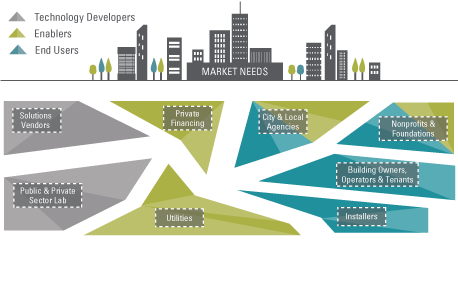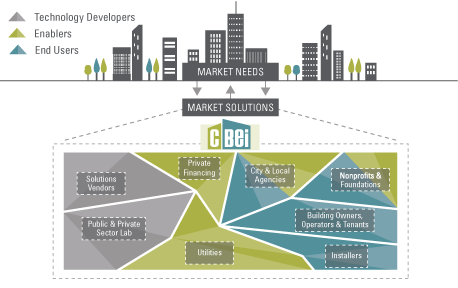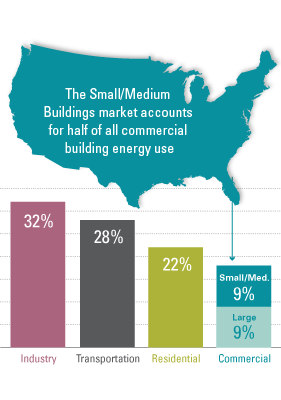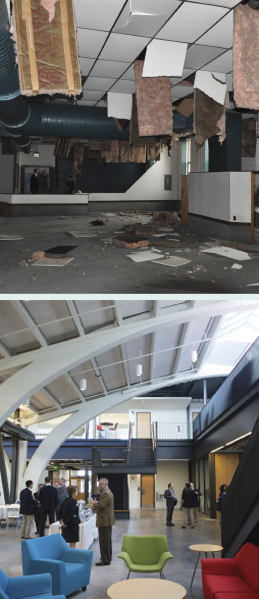Challenges for Small/Medium Commercial Buildings
This market accounts for 99% of all existing commercial buildings and approximately half of all commercial building energy use.
This underserved market is challenging to reach because there are so many individual owners and the market is fragmented. The owners are often small businesses focused on business growth, and they lack in-house expertise to manage energy use and plan for energy efficiency improvements. However, energy generally accounts for a larger fraction of their operating expenses than for large commercial building owners. Building operational and equipment improvements are smaller in scope than for large commercial buildings, and therefore are often serviced by providers that are smaller and less likely to provide integrated, full-service solutions.
Energy use improvements for buildings are more likely to be adopted if solutions are simple to implement. One simplifying approach is to have pre-proven technology packages for common building types and uses, making retrofits more standard and therefore less costly. This market sector is also better served by having automated solutions for detecting when systems are not operating properly and adjusting their operation to improve energy use.
While building-level solutions are needed for this market sector, there are stakeholders in the market — primarily cities, states, and utilities — that have a strong influence on energy use in buildings this size. They influence or drive retrofits through carrots such as financial incentives for retrofits or sticks such as regulatory actions (e.g., building codes).
Associations and other nonprofits and economic development agencies also are influential as trusted, independent entities that have non-energy missions but recognize the value that energy efficiency can have to smaller commercial building owners, such as how reducing energy costs can make regions more competitive. However, this diverse set of stakeholders is fragmented, often working in silos, even though they have similar goals.
Adding to the challenge for retrofits in this market sector is the uneven level of understanding and awareness about energy efficiency solutions among all stakeholders — from the technicians performing the work to the building owners paying for services, to city or utility staff developing incentives, to those involved in real estate transactions. Education and training tailored to the roles of the individual stakeholders is essential to improving the number and quality of retrofits.
The CBEI partnership was established to create solutions to address these critical gaps in the market and to develop solutions at a building and regional level, which can be pushed out nationally with the support of market partners.




